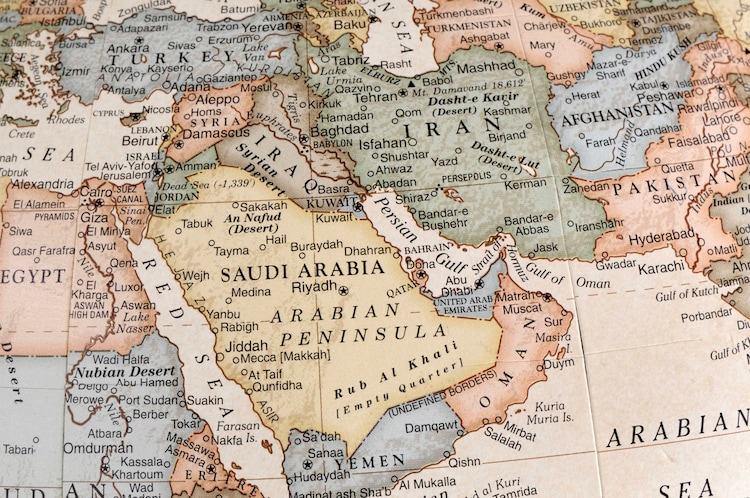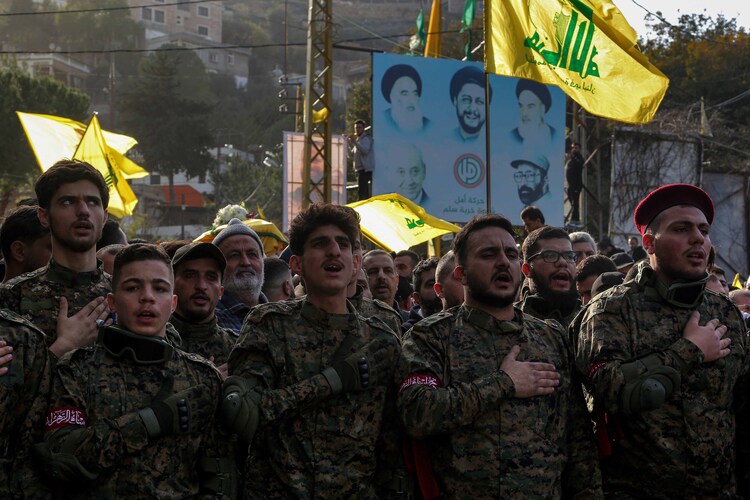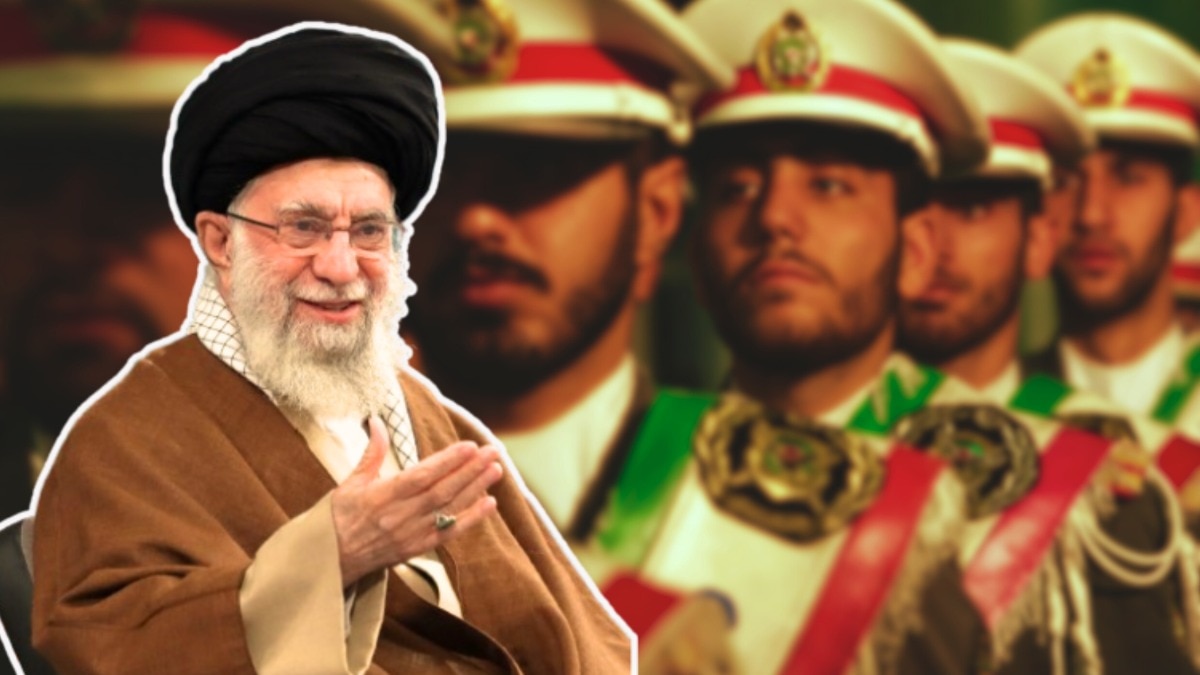2024-01-18 07:46:00
“States like these, and their terrorist allies, constitute an axis of evil, arming to threaten the peace of the world,” then US President George W Bush said in 2002, referring to Iran, its allies and its proxies.
It’s January 2024, and it looks like the “axis of evil” is in full play, with Iran at the helm of affairs.
Iran, which is sanctioned and isolated by the United States-led West, has emerged as a central figure in tensions across the world, not just in the Middle East.
Its involvement in the Israel-Hamas war, its exporting oil to China and its arms sale to Russia, which is involved in a war with Ukraine, have made it the trouble maker-in-chief.
From the Black Sea attacks to the missile and drone strikes on Pakistan’s Balochistan province, the fingerprint of the hardline Iranian regime can be found everywhere.
How will Iran’s action impact people across the world? It has already pushed crude prices up 4% and could disrupt global supply chains. Remember waiting for months for electronic gadgets? That’s what disruption in the global supply chain does. It could also push up the prices of everyday commodities.
WHY IS IRAN OPPOSED TO THE US AND ALLIES?
Iran’s nuclear programme, anti-Western ideology, and history of human rights abuses have led to strained relations with the United States and other Western nations.
Since the 1979–81 Iran hostage crisis, the US has had no formal diplomatic relations with Iran.
The animosity has its roots in the US’ interests in Iranian oil and the sheltering of the Shah of Iran from the leaders of the Iranian Revolution. The hardline Islamist government that came after the Iranian Revolution of 1979 always doubted that the US was against it.
Iran has been propping up militias and regimes to foil any American-influenced stability in the Middle East and to hurt US interests in every way possible. In this, Iran has the wholehearted support of China and Russia.
IRAN’S NEIGHBOURHOOD MUSCLE FLEX/MISADVENTURE
Regionally, in West Asia-Iran’s relationships are fraught with sectarianism and strategic rivalries involving countries like Saudi Arabia, Israel, the United Arab Emirates (UAE), Yemen and Lebanon.
Sectarian hate towards other Islamic countries in the region and anti-semitic hate towards Israel, are at the centre of Shia Iran’s narrative. Most countries in the Middle East are Sunni-majority.
Iran has spread its tentacles by funding and arming the Lebanon-based Hezbollah, Gaza-based Hamas, Palestinian Islamic Jihad and Yemen-based Houthis.

All these actors have joined forces against Israel, after it waged a counter-offensive on Gaza after the October 7 surprise attack.
Iran is reportedly assisting the Gaza-based group with finances, arms and strategic support.
Echoing Bush’s description of Iran and its allies in 2002, Israeli Prime Minister Benjamin Netanyahu also called out the current knit of Iran and its proxies, saying, “Axis of Evil”.
At a time when the Israeli Defence Forces (IDF) are pounding the Hamas-controlled Gaza hard, Iran is seen helping the cause of “Annihilation of the US and Israel”, but cautiously.
On one hand, Iran has not entered into the war in West Asia directly. On the other hand, it is helping Hamas fight against the IDF, Houthis disrupt global trade and Hezbollah fire missiles and drones at Northern Israel, from its safe heavens in Lebanon and Syria.
However, Iran has publicly denied direct involvement in Hamas’s attacks on Israel and in the ongoing Israel-Hamas war.
HOW HOUTHIS THREATEN SEA TRADE ROUTES
The Houthis of Yemen, in solidarity with the Palestinian people, attacked multiple oil tankers and fired missiles, threatening trade through the Red Sea and Suez Canal.
The route ferries around 12% of world shipping and 40% of the Eurasian trade, according to The Diplomat.
Tensions in the important Sea Lane of Communication (SLOC) even prompted the shipping companies to take the longer route around the Cape of Good Hope to travel from the Asia-Pacific to Europe and beyond.
The Houthi attacks and the US-led coalition’s retaliation led to crude prices increasing by about 4%, reported the Associated Press.
The shipping cost for a 40-foot container from China to Northern Europe jumped from $1,500 to $4,000, reported the Associated Press, citing the Kiel Institute for the World Economy, Germany. The situation also led to a slight decline in world trade in December 2023.
It has the possibility of disrupting global supply chains of crude, foodgrain (especially wheat), electronics and automobile components.
However, after what Iranian Foreign Minister Amir-Abdollahian said about it at Davos on January 17, it looks like Iran is in a mood not to let the skirmishes in the Red Sea’s Bab al-Mandab blow up.
KEEPING THE ISRAEL FRONT HOT WITH HEZBOLLAH
‘Aixs’s’ member up north in Lebanon, Hezbollah has launched airstrikes almost every day on North Israel, since the war started. It’s safe heavens too got back IDF strikes, in return.
Israel killed a high-ranking Hezbollah commander, Wissam al-Tawil in an airstrike in southern Lebanon on January 8.

After that, an Israeli airstrike killed a top Hamas commander, Saleh Arouri with six Hamas men, on January 2. The deputy political head of Hamas was also the founder of Hamas’ military wing, al-Qassam Brigades. The Al-Qassam Brigades is the military arm of Hamas and one of the leading players in the war against Israel.
For Israel, it was a symbolic achievement, but it did not claim any responsibility. The killing exposed the leader’s coordination among the members of the axis.
As the war stretches on, Hezbollah is trying its best to keep the IDF engaged in the north. while Israel faces the threat of a multi-front war.
OIL EXPORTS TO CHINA
Owing to Iran’s pursuit of manufacturing nuclear weapons and poor human rights record, the US has slapped sanctions on it. The sanctions since 1995 had put an embargo on Iran and prohibited overseas countries from doing business with Iran. The United Nations and the European Union have also imposed sanctions of varying degrees on the Shia nation.
However, reports suggest that Iran has been selling oil to China, the world’s biggest crude importer.
A recent report by Radio Frada.com said China gets a 12%-15% discount off a barrel on purchases of the banned oil from Iran.
China and Iran had already signed a 25-year oil deal, called the ‘Strategic Cooperation Pact” back in 2021. The pact meant Chinese investment in Iran instead of a supply of Iranian crude.
Oil revenue helped push the Iranian economy to positive on balance sheets in the first eight months of 2023, reported oilprice.com.
However, a January 7 Reuters report said that the oil trade between the two had seen a dip as Iran is negotiating for a higher price.
Apart from Iran, China has also benefitted from oil imports from Russia and Venezuela in the recent past.
ARMS EXPORT TO RUSSIA
The Russian offensive on Ukraine is being fuelled by North Korean ballistic missiles and Iran-supplied drones, according to a January 14 Financial Times report. Thousands of munitions like single-use explosive drones, colloquially called “suicide-kamikaze” drones – for use against Ukraine, added the report.

It turned out, “Officials said more than 75 Iranian-made Shahed drones were fired at the capital,” BBC reported.
In November 2023, the Ukrainian capital, Kyiv, saw the biggest drone attack on it.
It’s not just that the world is tired of the Iranian regime, even Iranians are tired of their hardline leadership.
IRAN TROUBLES AT HOME
Iran, at the heart of geopolitical instability, recently dodged a significant challenge. The Grand Ayatollah Ali Khamenei’s regime faced widespread demonstrations in 2022 after Mahsa Amini, an Iranian woman of Kurdish ethnicity, died in its custody.
She had been imprisoned for wearing the hijab improperly. The country has had a mandatory hijab law for women since the 1979 Revolution.
The protests, which saw rallies globally, were met with severe repression in Iran.
According to Iran Human Rights, at least 551 protesters, including 68 children and 49 women, were killed.
Iran, despite facing the challenges of poverty, disparity, inflation, mismanagement and sanctions, is showing no signs of acting straight. Needless to say, a very long reign of the conservative Ali Khamenei, the supreme Leader of Iran since 1989.
A statement by a former UN diplomat in Tehran probably sums it up and answers why Iran is not acting straight, “They’re showing the world needs Iran if it wants to keep the Middle East stable.”
Tune In
iran, iran news, iran strrikes pakistan, middle east countries, middle east map, hamas Israel, Hamas, Hezbollah, Hezbollah leader, usa
Source link
3 total views , 1 views today
